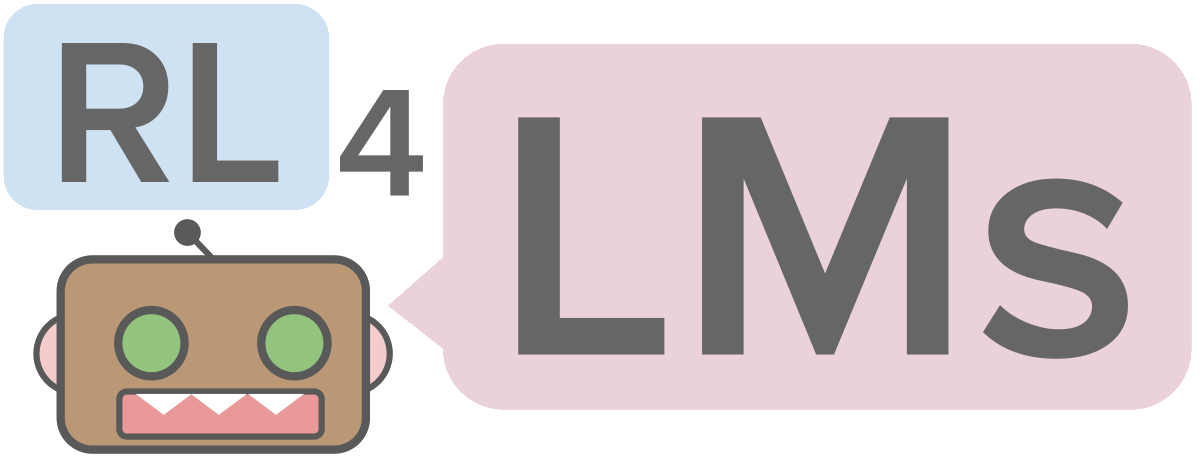Is Reinforcement Learning (Not) for Natural Language Processing: Benchmarks, Baselines, and Building Blocks for Natural Language Policy Optimization
We tackle the problem of aligning pre-trained large language models (LMs) with human preferences. If we view text generation as a sequential decision-making problem, reinforcement learning (RL) appears to be a natural conceptual framework. However, using RL for LM-based generation faces empirical challenges, including training instability due to the combinatorial action space, as well as a lack of open-source libraries and benchmarks customized for LM alignment. Thus, a question rises in the research community: is RL a practical paradigm for NLP? To help answer this, we first introduce an open-source modular library, RL4LMs (Reinforcement Learning for Language Models), for optimizing language generators with RL. The library consists of on-policy RL algorithms that can be used to train any encoder or encoder-decoder LM in the HuggingFace library (Wolf et al. 2020) with an arbitrary reward function. Next, we present the GRUE (General Reinforced-language Understanding Evaluation) benchmark, a set of 6 language generation tasks which are supervised not by target strings, but by reward functions which capture automated measures of human preference.GRUE is the first leaderboard-style evaluation of RL algorithms for NLP tasks. Finally, we introduce an easy-to-use, performant RL algorithm, NLPO (Natural Language Policy Optimization)} that learns to effectively reduce the combinatorial action space in language generation. We show 1) that RL techniques are generally better than supervised methods at aligning LMs to human preferences; and 2) that NLPO exhibits greater stability and performance than previous policy gradient methods (e.g., PPO (Schulman et al. 2017)), based on both automatic and human evaluations.
PDF Abstract



 IMDb Movie Reviews
IMDb Movie Reviews
 DailyDialog
DailyDialog
 WMT 2016
WMT 2016
 NarrativeQA
NarrativeQA
 ToTTo
ToTTo